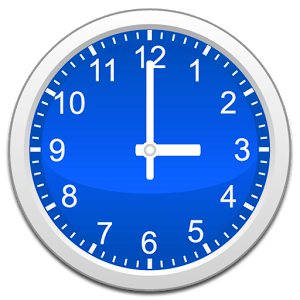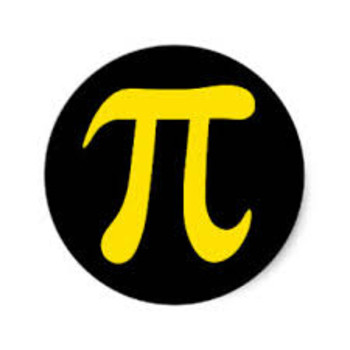Question #5ce04
2 Answers
48 times
Explanation:
In one hour, the clock's short and long hands form a 90° angle 2 times.There are 24 hours in a day. Hence, we have 2x24=48.
Therefore, the clock's short and long hand form 48 90° angles in one day.
Explanation:
Take a look at how an analog clock that has

Now, the common approach here is to say that in
This would lead to the conclusion that in
#12 color(red)(cancel(color(black)("hours"))) * "2 times"/(1color(red)(cancel(color(black)("hour")))) = "24 times"#
Consequently, you would say that in
#24 color(red)(cancel(color(black)("hours"))) * "24 times"/(12color(red)(cancel(color(black)("hours")))) = "48 times"#
This is not the correct answer. Here's why.
As you can see, the circle is divided into
#(360^@)/"12 intervals" = 30^@"/ interval"#
An interval here is simply
This is equivalent to saying that the minute hand completes
This implies that the minute hand completes
#360^@ - 30^@ = 330^@#
in one hour relative to the hour hand. Here's where the tricky part comes in. Let's assume that you're going to keep the hour hand locked in place at
In this case, the minute hand will only complete
In other words, the minute hand is "losing"
In
#12 color(red)(cancel(color(black)("hours"))) * (30^@"lost")/(1color(red)(cancel(color(black)("hour")))) = 360^@"lost"#
This means that in
#overbrace(11color(red)(cancel(color(black)("hours"))))^(color(blue)("the equivalent of 12 hours when both hands are moving")) * "2 times"/(1color(red)(cancel(color(black)("hour")))) = "22 times"#
This implies that in
#24 color(red)(cancel(color(black)("hours"))) * "22 times"/(12color(red)(cancel(color(black)("hours")))) = color(green)(|bar(ul(color(white)(a/a)color(black)("44 times")color(white)(a/a)|)))#
So, to sum this up, when both hands are moving, the minute hand completes
When the hour hand is kept in place, the minute hand only completes
As a result, two perpendicular positions will be "lost" every
This is why the two hands are not perpendicular to each other



